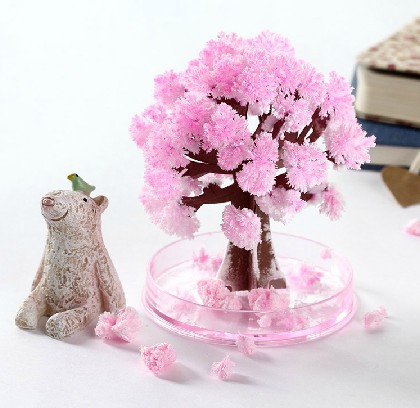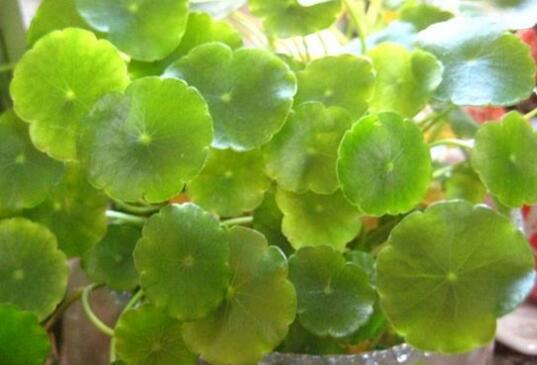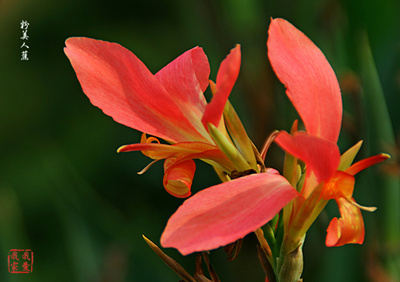Pot culture management methods and pest control techniques of cherry blossoms
Cherry blossoms can be potted. Cherry blossoms are suitable to be planted in most areas of China, rarely potted, and suitable for potted cherry varieties such as' rising Sun', 'Fuji Sakura', 'Yujin', 'Royal clothes Yellow' and so on. Potted cherry blossoms can blossom and blossom with the following measures.
Soil potted cherry blossoms should first prepare the soil, which can be made from self-made rotten leaf soil (collection of leaves and acid soil, chicken dung, charcoal powder and microbial retting). The self-made rotten leaf soil has good drainage and ventilation, which is suitable for the growth of potted cherry blossoms.
Pruning potted cherry blossoms should pay special attention to pruning the over-dense branches before and after flowering, cutting off the inner bore branches, withered branches, weak branches, disease and insect branches. In the whole growing period, the sprouting branches and overgrown branches should be cut off at any time so as not to consume nutrients. After pruning, preservatives must be applied to prevent □ from rotting, because the □ of cherry blossoms heals slowly.
Watering cherry blossoms avoid stagnant water, according to different seasons and seedling size of reasonable watering, grasp the principle of dry and wet, the soil can not be too wet or stagnant water, otherwise it will cause root rot, light leaves fall off, affect flowering, heavy, the whole plant dies.

The pot management of fertilizing cherry blossoms should be careful, and it should be watered frequently and fertilized enough, so as to ensure the water and nutrients needed for its growth and development, so that the plants have luxuriant branches and bright flowers, and the branches of cherry blossoms in the new pot should be cut short to promote the development of more new branches and differentiate more flower buds. Once a week, the rotten liquid fertilizer was dominated by nitrogen fertilizer in the early stage to promote vegetative growth, while in the later stage, attention should be paid to the application of phosphate fertilizer to prevent excessive vegetative growth and affect flower bud differentiation. From May to June, combined with foliar spraying of 0.2% potassium hydrogen phosphate, one-time basal fertilizer was applied before and after flowering to lay the foundation for the annual flowering of milkvetch. How to sow the seeds of potted cherry blossoms? Culture methods of potted cherry blossoms
Cherry blossom is a common ornamental flower in the process of landscaping, which blossoms brightly and is very suitable for planting. However, there are many varieties of cherry blossoms that are also very suitable for potted plants, such as the rising sun, bean cherry, Yujin, imperial clothing yellow and so on. In the process of planting cherry blossoms in pots, the method of sowing and propagation is often used. So, how to plant the seeds of potted cherry blossoms? The sowing and breeding methods and culture methods of potted cherry blossoms are introduced as follows.
Picture: potted cherry blossoms
1. Sowing and propagation methods of potted cherry blossoms
Prepare the seeds of the cherry blossoms. In fact, you don't need to buy it specially. If you see something planted in a nearby flower bed or in a friend's house, just pick some seeds and come down. It's relatively fresh and convenient. Before sowing, it is best not to see the light and soak in warm water for 24 hours. The sowing time is usually spring or autumn, and the germination temperature is preferably about 20 degrees. Its growth temperature is 16 degrees. Prepare flowerpots and soil, the best soil is peat soil with coarse sand, rotten leaf soil and so on. Don't cover the soil too much after sowing.
2. Culture methods of potted cherry blossoms
1. Apply fertilizer: Cherry blossoms are fertilized twice a year, and acid fertilizer is better. One was winter fertilizer, which applied organic fertilizers such as bean cake, chicken manure and mature fertilizer in winter or early spring, and the other applied quick-acting fertilizers such as ammonium sulfate, ferrous sulfate and calcium superphosphate after falling flowers.
two。 Watering points: the seedlings of cherry blossoms are vulnerable to drought after planting. In addition to full irrigation during planting, they should be irrigated once in the next 8-10 days to keep the soil moist but without stagnant water. Loosen the soil in time after irrigation, it is best to cover the surface thinly with grass to reduce water evaporation. Within 2-3 years after planting, in order to prevent the trunk from drying, it can be wrapped with straw. However, after 2 to 3 years, the seedlings grow new roots and gradually increase their adaptability to the environment, so it is no longer necessary to cover grass.
Picture: potted cherry blossoms
3. Pruning essentials: Cherry blossom pruning is mainly to cut off withered branches, overgrown branches, overlapping branches and disease and insect branches. In addition, when many branches grow on the trunk of large cherry blossoms, a number of strong branches should be retained, and the rest should be cut off from the base to facilitate ventilation and light. The pruned branches should disinfect the wound with medicine in time to prevent the invasion of bacteria after rain, resulting in decay. Cherry blossoms after a long period of sun exposure, the bark is easy to aging damage, resulting in decay, it should be removed in time and disinfection treatment. After that, the rotten part was bandaged with rotten leaf soil and carbon powder to promote its normal physiological function.
4. Pot soil replacement: Cherry blossoms stop watering 3-4 days before turning the pot, making the basin soil slightly dry. When turning the pot, lift the pot upside down with your left hand, then slap the pot with the palm of your right hand, or press the drain hole of the pot with a wooden stick, and the cherry blossoms can come out of the pot with soil. The roots of cherry blossoms protruding from the flowerpots are densely white along the edge of the basin soil. Cut loose fibrous roots with bamboo cuttings, remove most of the old soil, retain 1/3, and transplant the soil in the new basin.
5. Prevention and control of diseases and insect pests: Cherry blossoms mainly have two kinds of diseases: glue flow and root rot, which should be treated and improved in time, water and fertilizer management should be strengthened, and reasonable pruning should be done. During the growth of cherry blossoms, aphids, red spiders and shell insects will occur in a year, generally spraying 3-4 times, the first in the early flowering, the second in the late flowering, and the third from July to August. It is necessary to observe carefully and prevent in time in order to achieve better results.
[editor's conclusion] although cherry blossoms are mainly planted in the ground, they also have some ornamental value when potted. The above introduces the sowing and breeding methods and culture methods of potted cherry blossoms, hoping to help you!
Prevention and control methods of flower diseases and insect pests in spring there are common diseases and insect pests of flowers in spring, such as powdery mildew, rust, black spot, leaf shrinking, yellowing, etc., as well as longicorn beetles, aphids, shellfish, beetles and other pests.
Control method < 1 > powdery mildew: common in impatiens, melon and leaf chrysanthemum, Dahlia, rose, crabapple and other flowers, mainly on leaves, but also harmful to tender stems, flowers and fruits. At the beginning of the disease, there are several discoloration spots on the leaves, but there is no obvious edge around them, and then the small spots synthesize large spots. With the development of the disease, the disease spot is covered with white powder, the leaf shrinks, the flower suffers and cannot blossom normally, and the fruit stops developing. The onset period of the disease can be from early spring to summer to autumn. The prevention and treatment methods are as follows: early removal of diseased leaves at the beginning of the disease to prevent spread; when the disease is serious, it can be sprayed with 0.2 to 0.3 degrees stone sulfur mixture, or 1000 times 70% methyl Tobu body fluid. < 2 > Rust: most of the flowers and trees prone to this disease are Rosaceae plants such as Tripterygium, including rose, weeping begonia and so on. In addition, peony and carnation are also susceptible to this disease. The disease occurred in early spring, with spotted chlorosis on the tender leaves at the initial stage, small black spots on it, yellow circles in the tender leaves at the initial stage, and gray-white wool on the reverse side, and the yellowish-brown powder was produced between August and September, which spread to the juniper tree with the wind, and spread with Rain Water in the early spring of the next year, and then endangered the above flowers. Therefore, the disease can only be sustained by parasitic harm on these two plants. In the theory of diseases and insect pests, it is called "alternate parasitic disease". When the harm is serious, it will cause fallen leaves, and when it is lighter, it will cause disease spots, affecting the appearance and photosynthesis. The prevention and control methods are as follows: try to avoid planting juniper cypress and other transferred host parasitic plants nearby; in early spring, about mid-March, start spraying 400 times 20% vermicellin emulsion or 50% bacilli special wettable powder, and spray again after about half a month until early April. If there is little rain or drought in spring, you can spray one less time. < 3 > Leaf shrinking disease: it mainly occurs on the leaves of Rosaceae plants such as plum and peach. When the leaves were unfolded at the beginning of dry spring, the damaged leaves were malformed and swollen and the color turned red. As the leaf grows and curls in the opposite direction, the disease spot gradually turns white, and powdery matter appears on it. Due to the damage to the leaves, the tender shoots can grow normally and even die. If the leaves are seriously damaged, they will fall, affecting the tree potential and reducing the amount of flowers. The prevention and control methods are as follows: in the early stage of the disease, the diseased leaves with symptoms were removed in time to reduce the spread of the disease, and 3 ~ 5 degrees of stone-sulfur mixture was sprayed before germination in early spring to eliminate the pathogen of overwintering inside and outside the bud scale and on the diseased shoot. If we can do this for two or three years in a row, we can prevent and cure the disease more thoroughly. For seriously ill potted flowers, it is necessary to apply more fertilizer and strengthen management in order to restore the tree potential in order to blossom more. Aphids: also known as honey insects. Many kinds of potted flowers are harmed by aphids, such as peach, rose, elm leaf plum, plum blossom, cherry blossom and so on. Aphids mostly gather on the opposite side of leaves and feed on leaf sap for a living. Because of its fast breeding speed, with the rise of temperature in early spring, the damaged leaves can not spread leaves normally, and the new shoots can not grow, which will cause leaves to fall off and affect flowering. When it is hot in summer, some aphids fly to other plants, such as vegetables, and then fly back to the trees to lay eggs for the winter. The control methods are as follows: 1000 times 40% dimethoate emulsion can be sprayed before spreading leaves after germination to kill the newly ovalized young aphids, or not to protect ladybugs and other natural enemies to eliminate aphids until the population growth and decline is out of balance. Natural enemies can not control aphids, and then consider medication. When using this method, it is necessary to use the auxiliary method of pinching dead aphids in the team leader. < 5 > scale insects: there are many species of scale insects, which are harmful to flowers and trees, and they are the most harmful pests. Tortoise shell scale, white lipid, round. Mulberry white scale, white, pointed. Oyster scale, dark brown, long-shaped male and round female. Armor scale, dark brown, round, shaped like armor. Plants vulnerable to shell insects are camellia, pomegranate, oleander, rhododendron, hibiscus, cherry blossom, plum, peach, begonia, rose and so on. The larvae first suck the sap on the leaves to make the leaves green, and when adults, they mostly suck sap on the branches, which seriously weakens the tree potential and affects flowering. The control methods are as follows: squeeze to death by hand or scrape off the pests on the leaves and branches with a knife, spray 1000 times 40% dimethoate emulsion once or twice in the larval stage, with an interval of 7 to 10 days. < 6 > Red spider: mites. The worm is so small that it is almost indistinguishable to the naked eye. Most of them accumulate, and the breeding speed is very fast. There are many vulnerable plants, such as rose, rose, peach, cherry blossom, rhododendron and so on. Insects gather on the back of the leaves to suck sap, which initially makes the leaves green, and finally causes the leaves to fall off and the new shoots to die. In severe cases, the young trees grow weak and even die. The prevention and control methods are as follows: spraying 1000 times 40% dimethoate emulsion or 1000 times ~ 1500 times trichloroacaricidal emulsion in the initial stage. When the summer temperature is high, the breeding field of the insect is fast, and the control is often not as good as it is. It is necessary to spray pesticides early, and 3 ~ 4 times in a row, with an interval of about 7 days, and do not use a single pesticide to avoid drug resistance. < 7 > nematodes: nematodes harm plant roots and cause abnormal plant development, including orchids, carnations, daffodils, peonies and so on. When pests are light, they are often difficult to detect. When the insect pest is serious, the plant grows badly and blossoms poorly. As there are many kinds of nematodes in the soil, the worms are young and almost invisible to the naked eye, so it is only based on prevention. 20 ~ 30 3% furan granules can be added to each kilogram of planted soil to dissolve and slowly release nematodes to eliminate nematodes. < 8 > Caterpillars: there are tentorium caterpillars, boat caterpillars and so on. Eating habits are very miscellaneous, almost harmful to all plants, showing fulminant. It is necessary to prevent and cure it as soon as possible. Manual capture can be used and 1000 times 40% dimethoate emulsion can be sprayed if necessary. < 9 > Spodoptera litura: larvae eat in the branches, peach, plum and cherry blossoms are common, which can seriously break 2-3-year-old branches and affect the posture of the tree. The prevention and control methods are as follows: pay attention to observation at ordinary times, when there are wormholes in the branches and excrete small granular feces from the wormholes, the iron wire can be used to dig out the wormholes to the wormway, or cut the branches to kill pests. The insect is reddish brown and has hairs on its head and body, which is obviously different from the milky white of longicorn beetles. This method is also used to control longicorn beetles. You can also use 150 times 80% dichlorvos emulsion, inject it through the faecal outlet of the worm track with a syringe, and then block it with wet mud to kill pests. < 10 > Beetles or beetles: leaves or flowers of omnivorous pests. Roses are vulnerable. Artificial capture is the main method of prevention and control. < 11 > Underground pests: grubs, namely beetle larvae, white. Ground tiger, green and black. Feed on the root or root neck of a plant in the soil, often causing plant death. The method of prevention and control is to dig it from the entrance of the hole in time.
- Prev

How to make the leaves yellow? four tricks to make the leaves green again / details are very important.
Under normal circumstances, it is an evergreen plant all the year round, but some flower friends find that their leaves turn yellow, which not only makes the overall plant shape not good-looking, but also may affect the growth of the plant. What if the leaves turn yellow? Let's find out the specific reasons and solutions.
- Next

How to spend the winter with canna
Autumn is coming, the temperature is gradually dropping, and the fleshy roots of canna are vulnerable to freezing damage at low temperatures. Therefore, we should make full preparations for overwintering before the coming of winter. According to personal experience, you can survive the winter safely in the following ways. Before and after Frosts Descent, after the ground part of the locally planted canna died, the dead leaves were cut off.
Related
- Fuxing push coffee new agricultural production and marketing class: lack of small-scale processing plants
- Jujube rice field leisure farm deep ploughing Yilan for five years to create a space for organic food and play
- Nongyu Farm-A trial of organic papaya for brave women with advanced technology
- Four points for attention in the prevention and control of diseases and insect pests of edible fungi
- How to add nutrient solution to Edible Fungi
- Is there any good way to control edible fungus mites?
- Open Inoculation Technology of Edible Fungi
- Is there any clever way to use fertilizer for edible fungus in winter?
- What agents are used to kill the pathogens of edible fungi in the mushroom shed?
- Rapid drying of Edible Fungi

